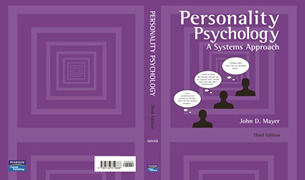The 3rd edition of Personality Psychology: A Systems Approach is designated a "classroom test edition" edition, as were the 1st and 2nd editions. In this context, "classroom test edition" refers to the fact that the textbook is a custom published version of the text, rather than a more formal first edition.
To be sure, the differences between this test edition and a more formal first edition are not expected to be great. The 3rd classroom test edition has a professional soft cover, good formatting and layout, all tables, figures, and diagrams, and other didactic materials such as glossaries, study questions, and the like. But there are differences.
The differences involve a few advantages and a few issues to address. In regard to advantages, the students get to see a very up-to-date edition. Whereas a formal publisher may take as much as a year or longer to produce an edition of a book after manuscript delivery, a custom version can be carefully produced in a matter of three to four months. Moreover, the custom format allows for quicker and easier revisions than with a more formally published text.
The overall feel of a custom book can be exciting. This book, with its dramatic, contemporary, and somewhat experimental departure from the typical way of teaching the coure, provides a new way of envisioning the field. Students who take the course may be at a future advantage because their thinking about the discipline is more integrated.
There are some issues involved as well, however. One trade-off for greater speed into the classroom is that there is less time for copy editing. For that reason, typographical errors and problems in continuity (e.g., where Chapter 8 is referred to when it should be Chapter 9) are more frequent than what may be the case with a more formally published book. That said, a great deal of checking and editing has gone into the 3rd edition.
Professors who have used the book typically address these advantages and issues frankly with students at the beginning of the semester, and remind them of the excitement of having such an up-to-date book through the semester.

